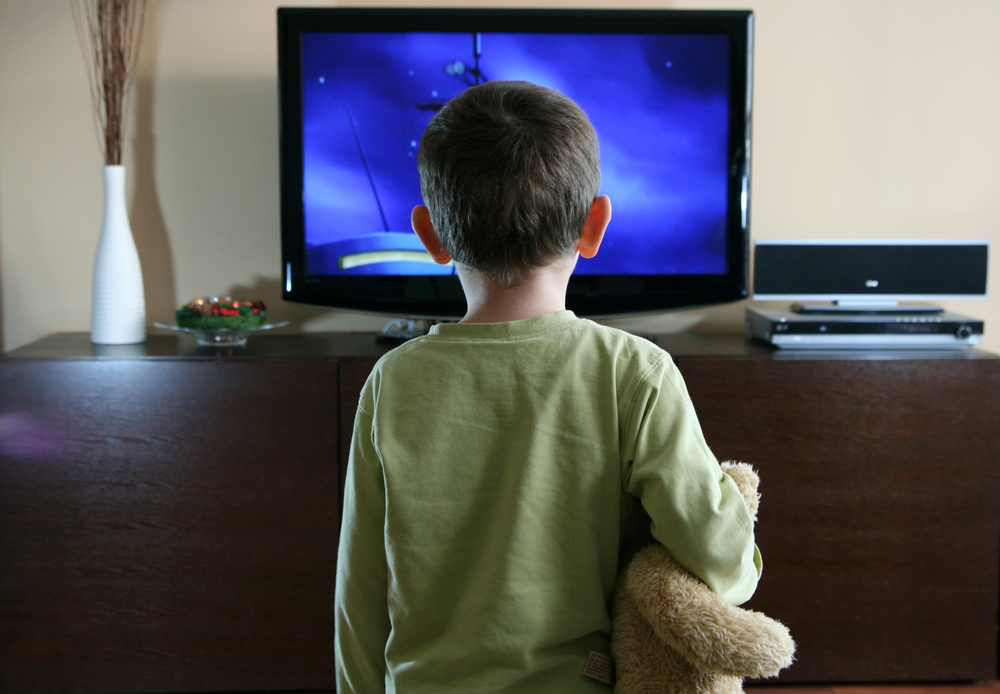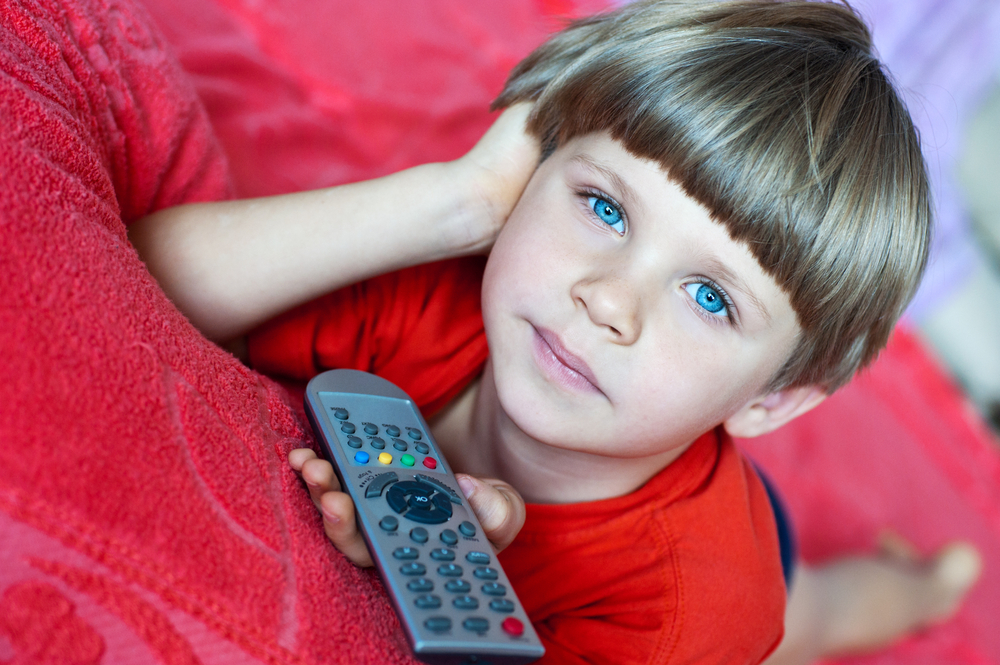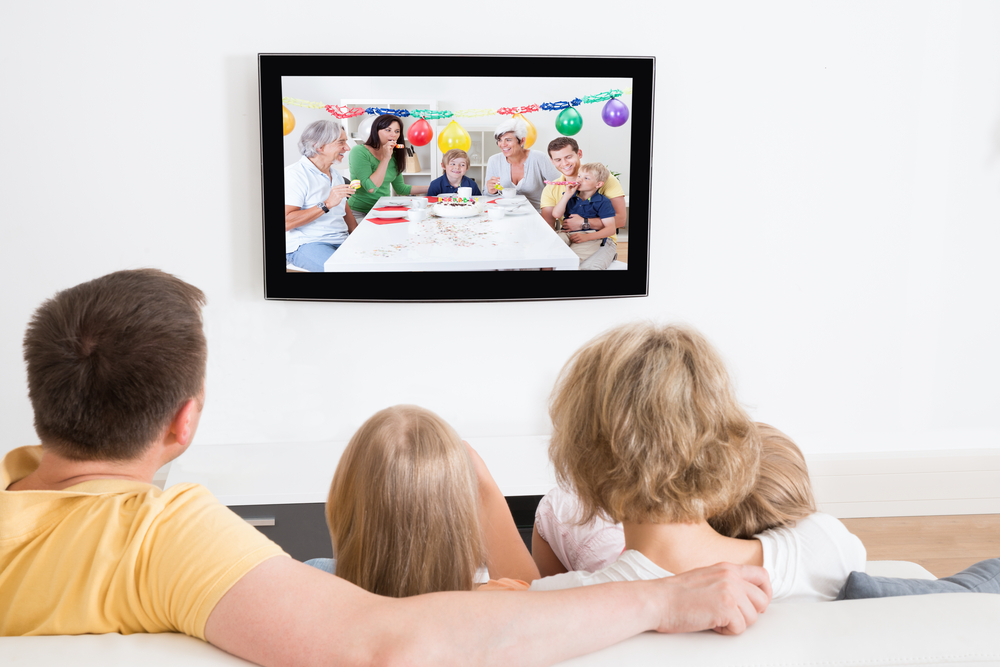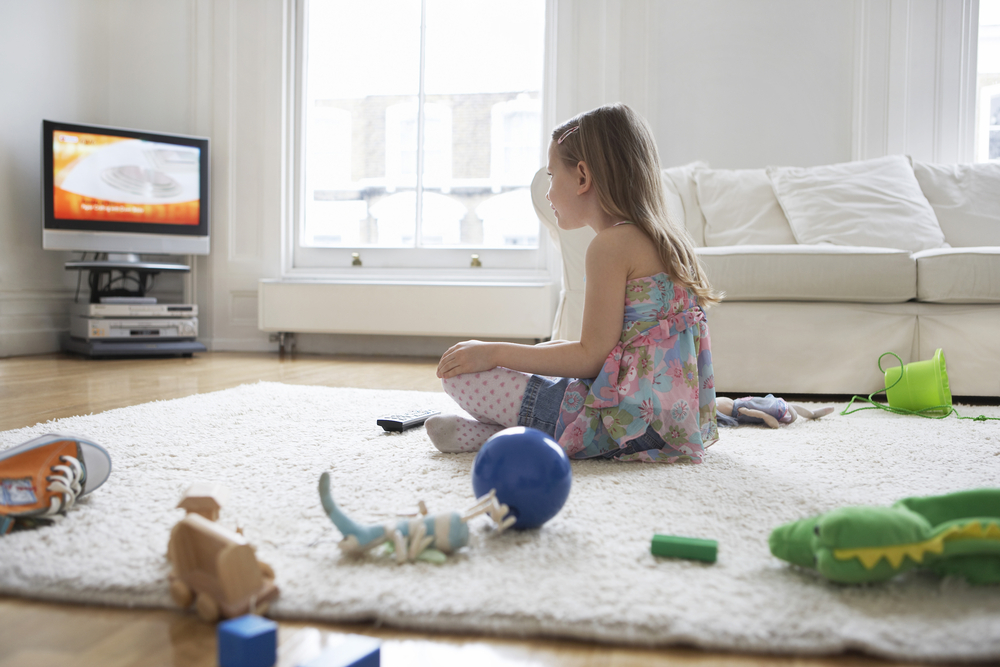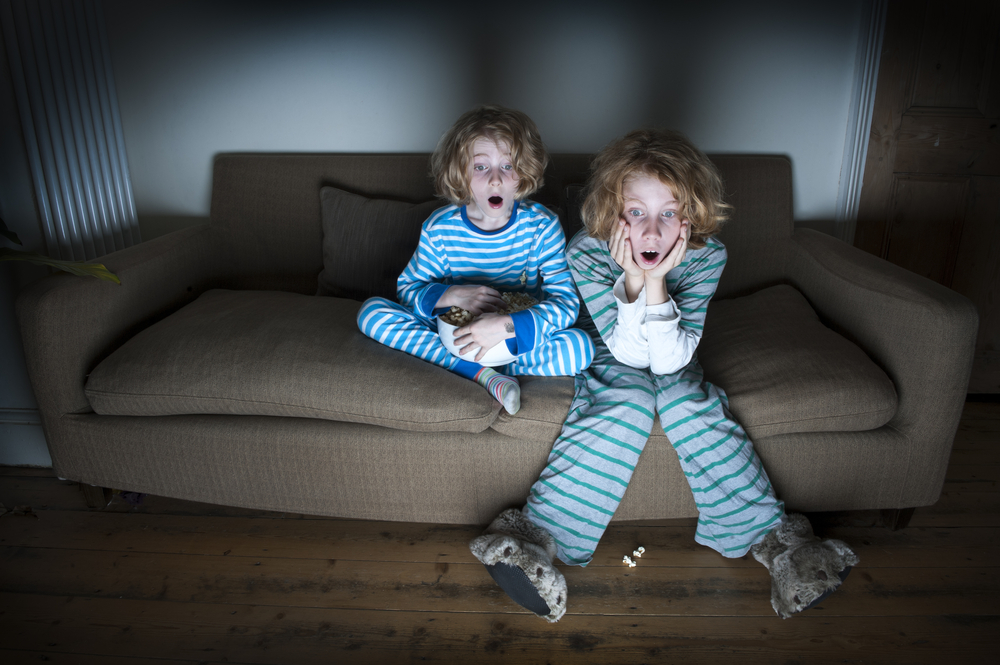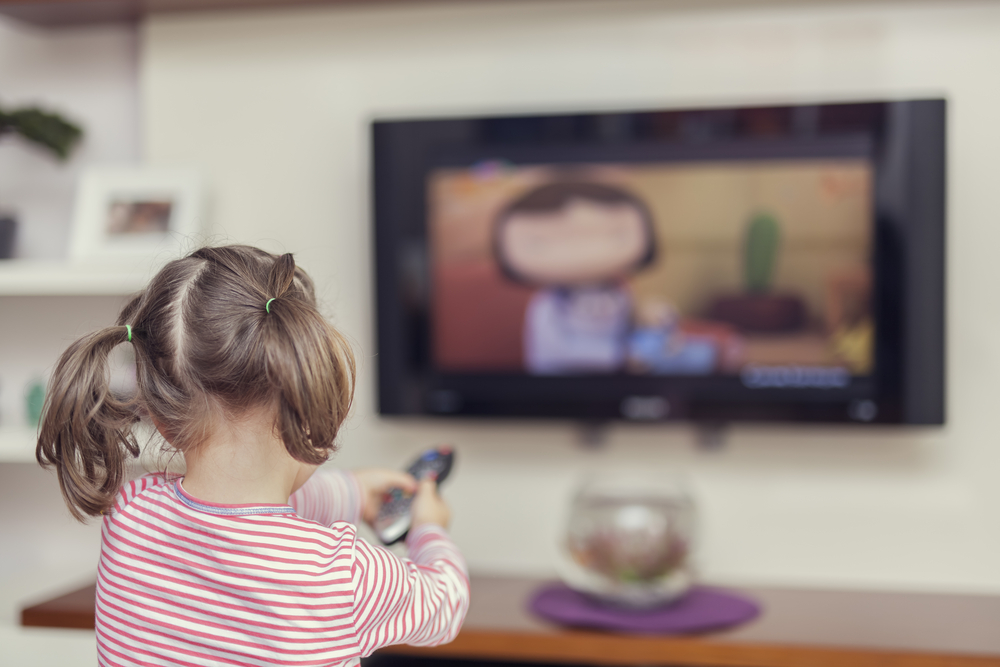Can watching television influence children’s behaviour? The link between television and violence does seem strong, especially if there is a lack of parental supervision.
How much television do you, or your children, watch in an average day? According to a 2010 research study observing young children’s habits of watching television, American children spend about 4.5 hours each day watching television. While researchers have been looking at how television watching affects children for as long as television has existed, we still don’t have clear idea about what impact it actually has.
There have always been concerns over the potentially harmful effects of media violence on children. Frederic Wertham’s crusade against violence in comic books led to the creation of the Comics Code and a major overhauling of the entire printing industry. Ironically, Wertham’s attempts to do the same with television violence led to his downfall as a media critic. Even then, television violence was a can of worms nobody felt inclined to open.
Can watching violence on television actually influence how children behave?
Even since Albert Bandura’s classic Bobo doll experiments in 1961 and 1963, the role of social modeling in influencing violent behaviour in children has been a controversial topic for researchers and parents alike. Ethical concerns have limited the kind of research that can be done with children to test the impact of media violence on them. Still, the link between television-watching and violence seems strong even when alternative explanations are ruled out.
In a research study following 707 children over a 17-year period, early TV viewing is strongly linked to later aggressive behaviour even when other contributing factors such as parental neglect, neighbourhood violence, and parental income were taken into consideration. Similar studies have shown a link between watching sexual content on television and later sexual acting-out behaviour. Though researchers are not insisting that all children watching sex and violence on television are fated to act out on what they see, the potential harmful effect of television watching cannot be ignored.
The problem is made even worse by the relatively lax supervision parents provide over what their children watch on television. A 2010 national survey of television-watching behaviour in children showed that 72% of children reported no time restrictions over television viewing while 52% reported that they were free to watch any type of content they wished. While 39% reported having to follow rules, those rules were enforced “some of the time or less.”
On the other hand, media research has also demonstrated that television watching can have a beneficial effect as well. Seeing people acting in a positive way can influence how children respond in similar situations.
Based on concerns over the powerful influence television content can have on children, especially young children, the U.S. Congress passed the Telecommunications Act in 1996. Along with being the biggest overhaul of telecommunications law in over 60 years, the Act established a formal rating system to let viewers know when a program contains content that might be inappropriate for young children.
But what about television commercials?
Though the average child sees more than 40,000 commercials a year, research looking at the impact television advertising has on children has been limited up to now. According to Roger Desmond of the University of Hartford and Rod Carveth of Morgan State University in a meta-analysis published in 2007, advertising can influence children in three different ways:
- The ads use powerful multimedia techniques to hold children’s attention.
- Younger children do not have the cognitive tools to tell the difference between commercials and television programs.
- Young children are often less likely to know the difference between reality and what they are being told.
Any parent dealing with a child pleading for them to buy the latest toy knows perfectly well how influential commercials can be.
Not all commercials are designed to sell products however. Public service messages aimed at educating the public or changing certain behaviours can affect children as well, and not necessarily in the way that the makers of the commercial may have intended. Commercials airing during sporting events often contain content that, while effective for adults, may not be suitable for children.
Even commercials on child-friendly television networks such as the Disney Channel and the Cartoon Network can include violent content at times. In a recent study published in Psychology of Popular Media Culture, Lourdes P. Dale and her colleagues at the University of Hartford used a coding system they developed to look at positive and negative content in television commercials on different television channels. The rating system included the following categories:
- Positive content“” for example, positive role modeling, encouraging statements, positive interactions, positive messages for overall commercial, advances in research, and medical/health benefits.
- Negative content
- Violent behaviors “” for example, physical evidence of previous violence, ongoing and overt physical force with intent to harm/threaten an individual, oneself, or animal, or destruction of property. This excludes sports, natural disasters, or military advertisements.
- Disturbing behaviors “” for example, natural or contrived disaster, unexpected or potential accidents, or graphic bodily disintegration.
- Sexual behaviors “” for example, discreet nudity implying sensuality, intimate touching, sexual intercourse/foreplay, and verbal or nonverbal suggestive sexual communication.
- Negative modeling “” for example, smoking, drinking alcohol as a minor, and swearing.
The study was based on 12,004 commercials airing between 7 AM and 10 PM (both on weekends and weekdays) on twelve channels. Another 2,433 commercials airing on three children’s channels were used for comparison. All commercials were carefully rated by trained raters to rule out possible bias. Along with rating the commercials, the rating for the show in which the commercial appeared was also recorded to compare positive and negative content.
Perhaps not surprisingly, MTV aired the most commercials (13.2 % of the sample) while PBS aired the fewest (6.2%). Overall, commercials rated as having positive content made up 20.2% of the total while negative content was found in 13.7% of commercials. Commercials with disturbing behaviors made up the most common type of negative content (6.0 per cent) with violent behaviour being the next most common category (5.2 per cent). Most commercials airing on the nine general channels studies were rated as neutral.
When compared with commercials on children’s channels however, the researchers found no real differences for rate of negative content or violent and disturbing behaviours. Commercials airing on children’s channels also had significantly more negative modeling than commercials on the general channels. Researchers also found a strong link between television program rating and positive content during commercials.
Contrary to what the researchers expected however, commercials during sporting events were not more likely to show violent or disturbing images. They were more likely to show negative modeling, though (including drinking alcohol, pushing other people, or not wearing seatbelts).
Overall, some channels were far more likely to show inappropriate content during commercials, no matter what time of day or program rating. MTV was the channel with the highest rates of all types of negative content, whether during programs or commercials. Time of day made no difference in terms of likelihood of seeing inappropriate content.
How much impact does inappropriate content in television commercials have on children?
Considering that these commercials are designed to influence behaviour, whether directly or indirectly, it seems surprising that there is little real control over what children see in commercials aside from the self-policing provided by the television industry itself.
Current federal regulations only control the amount of commercial time during children’s programming. The actual content in commercials is only monitored by industry watchdogs such as the Children’s Advertising Review Unit (CARU) of the Council of the Better Business Bureaus which has no real legal authority over advertisers. The guidelines only apply to advertising directed at children directly however, many advertisers tend to tailor their commercials to what they think the audience might find appealing. Still, the messages in their commercials are usually intended for adult audiences, not the younger children who might be watching.
While parents need to be cautious about what their children see on television, especially with adult-oriented channels such as MTV, Loudes P. Dale and her colleagues also recommend that advertisers be more responsible about matching television commercials to program ratings.
Mental health professionals also need to warn parents about the potentially harmful effects that inappropriate content, whether through programs or commercials, can have on younger children. Despite a tendency in many parents to use television as a “babysitter,” unsupervised television watching can be more damaging to young children than they realize.
Do you regulate what television channels your child watches? If so, how do you do that? Do you watch TV with them or you let them watch it by themselves? Have you noticed the influences of TV and TV commercials on their behaviour and what do you do to suppress that? How do you explain to them the difference between reality and what they are being told on TV and in TV commercials?
[divider]
[poll id=”10″]
[divider]
Author: Romeo Vitelli, Ph.D, is a psychologist in private practice in Toronto, Canada. He received his doctorate in Psychology from York University in Toronto, Ontario in 1987. In 2003, he went into full-time private practice and has been an avid blogger since 2007. He is the author of The Everything Guide to Overcoming PTSD which has recently been released.
Twitter: https://twitter.com/rvitelli
Source: PsychologyToday


